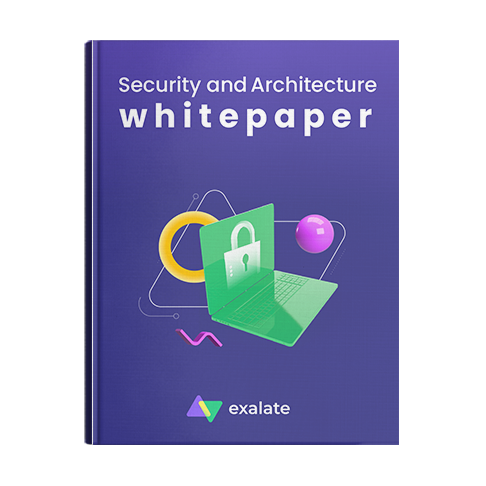How a Large Open-Source Foundation Uses Exalate to Help Drive Adoption with its Communities
Client:

Integration:
jira - github


Gaining full control of GitHub repositories

Efficient data update

Cost efficient

Providing integrated public data
More and more organizations are now collaborating with outsourcing companies to deliver projects and meet goals more efficiently.
The seL4 Foundation is an Open Source foundation around the highly secure seL4 operating system microkernel, with a large, active ecosystem of companies, research institutions, open-source developers, users, and platform providers. The sel4 microkernel is a high-security basis for autonomous systems in aviation, space, and ground-based vehicles, as well as secure communication devices, medical devices, and information systems.
As a director of the seL4 Foundation and the chair of the Technical Steering Committee that oversees the direction of the technology, Gerwin Klein, explains to us how Exalate has helped maintain a seamless collaboration between teams working in Jira and GitHub.
Why Exalate?
Smoother collaboration between Jira and GitHub
Keeping the data updated Free license plan (Atlassian) for open-source companies
Not losing track of issue raising in a large number of GitHub repositories
Keeping data integrated while providing access to public
Tackling the Challenge
The seL4 Foundation manages over 50 active GitHub repositories, which grew out of more than 20 years of research on highly secure operating system kernels by UNSW Sydney, and later CSIRO, Australia’s national science agency.
For issue tracking as well as for project and sprint planning, the seL4 Foundation also runs an instance of Jira with three main trackers, again with accumulated knowledge and material from over 20 years of research. So if it could facilitate this collaboration between the two platforms, the Foundation could have better-integrated data and more control over what was shared with who and how.
As with any large project, there are many roles. For instance, there is the open-source community of developers, companies, and contributors who provide the software, coordinate on Jira, and collaborate on GitHub. There are also their users or more casual contributors who will raise GitHub issues or pull requests but will typically not interact much with Jira.
This raises challenges:
- Issues were raised on GitHub and in many different repositories, but planning and the actual issue tracking and developer discussion were happening in Jira.
- 50 GitHub repositories did not map straightforwardly onto three Jira trackers with simple Jira automation.
Gerwin Klein
chair of the Technical Steering Committee of the Foundation
GitHub is accessible and popular in the open-source community, but is too distributed for more complex planning and issue discussions. Jira is well-suited for the required features, complexity and coordination, but less accessible for users who typically only interact with one or few of the many repositories the seL4 Foundation manages.
Gerwin Klein
chair of the Technical Steering Committee of the Foundation
So Exalate came into the picture to help facilitate the synchronization between the two environments in the most flexible way possible.

Take a look at what goes under the hood in regards to architecture, security and deployment options for Exalate
Flexible Two-Way Synchronization with Exalate
Exalate successfully met the Foundation’s requirements and users can now easily sync issues between Jira and GitHub, no matter how many repositories there are, commenting on one side and following up on the other for instance.
Gerwin Klein
chair of the Technical Steering Committee of the Foundation
For the seL4 Foundation as an open-source organization, there had been no security risks to address before adopting Exalate since both ends are public. But they needed security in the sense that not everyone should be able to change the data. So they needed data integrity but confidentiality was not an issue.
We asked Gerwin about the most noticeable impact they have experienced in the short time they have been using Exalate:
Gerwin Klein
chair of the Technical Steering Committee of the Foundation
The long-term goal of the foundation is to drive adoption of the secure seL4 microkernel and to provide the open-source community around it with the tools to make that happen.
The seL4 kernel is used in a number of industries, with demonstrators in autonomous systems in aviation, space, and ground-based vehicles, as well as secure communication devices and medical devices. To succeed long-term, it needs an ecosystem of companies that can compete and collaborate with each other, and at the same time support the open source community to drive the platform further.
Exalate is one of the key tools to make this diverse ecosystem happen.

Results Recap
- Gaining full control of GitHub repositories
- Efficient data update
- Cost efficient
- Providing integrated public data
As companies grow bigger and their collaboration goes cross company, their need to adopt a seamless integration becomes more and more inevitable. You can save time, money, and resources with the right solution and of course enjoy the ease of communication without having to handle everything manually.
Become an Exalate user and experience a seamless integration and an optimized workflow. It’s flexible enough for any sync use case.